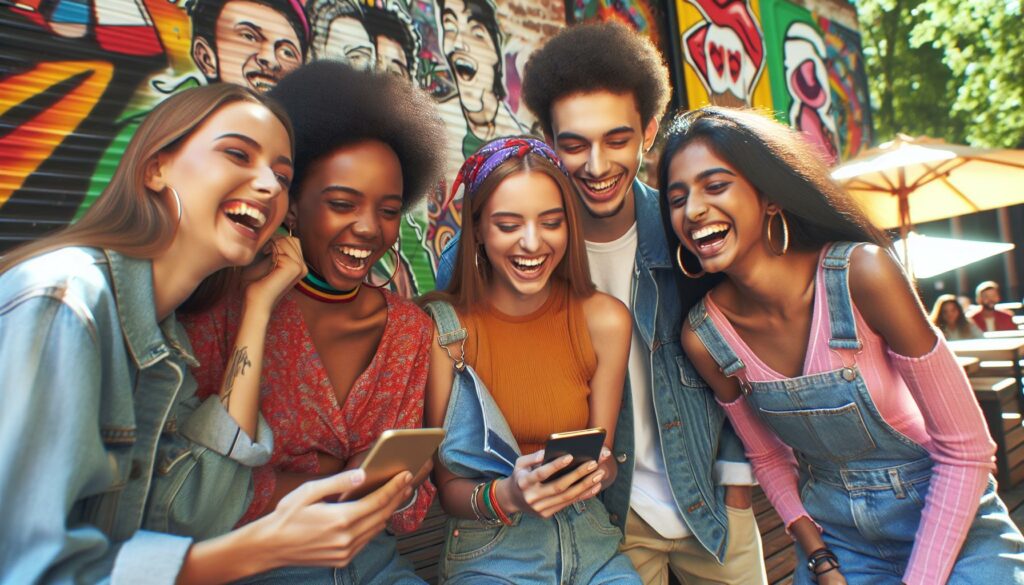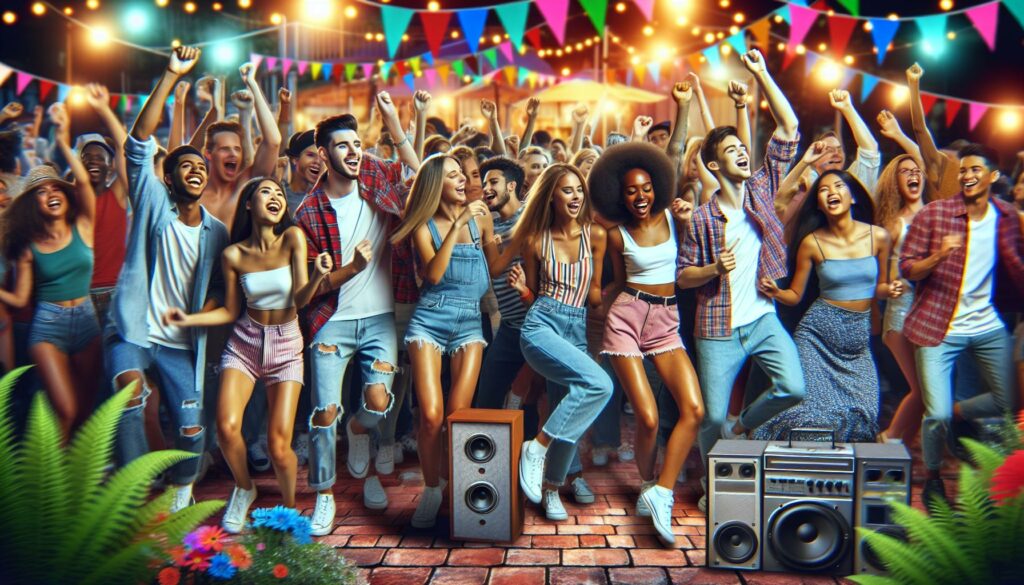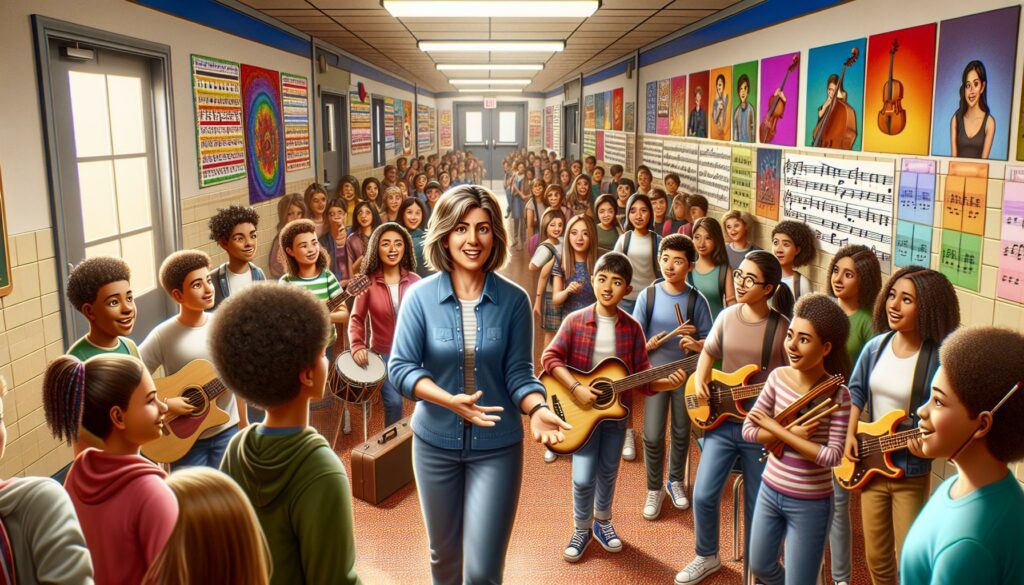I’ve always been fascinated by how popular culture shapes our daily lives and influences society at large. From viral TikTok trends to blockbuster movies, pop culture surrounds us everywhere we look and impacts everything from our fashion choices to our vocabulary. As a cultural observer, I’ve noticed that pop culture isn’t just about entertainment – it’s a complex reflection of our society’s values, beliefs and evolving norms. It’s dynamic, constantly changing and often challenges traditional boundaries while creating new ones. But with so many conflicting views about what defines popular culture, it can be tricky to separate fact from fiction. Which of the following is true of popular culture?That’s why I’ll explore some key truths about pop culture and bust common myths that might surprise you.
- Popular culture is a dynamic reflection of society’s values and beliefs, constantly evolving through digital platforms and social movements
- Modern pop culture is characterized by mass appeal, widespread recognition, and rapid digital dissemination across diverse demographic groups
- Digital platforms like TikTok, Instagram, and YouTube have dramatically accelerated cultural exchange, with trends now emerging and spreading globally within hours
- Pop culture serves as a powerful social mirror, influencing public opinion while addressing important societal issues through entertainment media
- The entertainment industry generates massive revenue through pop culture, with global earnings reaching $2.2 trillion in 2021 and digital media accounting for 60%
- While pop culture has global reach, it maintains local adaptations and interpretations across different regions, creating unique cultural hybrid forms
Which of The Following is True of Popular Culture?
Modern popular culture embodies shared experiences consumed by large segments of society through mainstream media platforms. Its defining characteristics emerge from collective participation, digital accessibility, and rapid dissemination across diverse demographic groups.
Mass Appeal and Widespread Recognition
Popular culture garners widespread acceptance through common interests shared by diverse populations. Major sporting events like the Super Bowl attract 100+ million viewers annually, while global music hits like “”Despacito”” accumulate 8+ billion views on YouTube. I observe these cultural phenomena gaining momentum through:
- Reaching multiple demographic groups simultaneously
- Creating shared experiences across geographic boundaries
- Generating significant media coverage
- Inspiring merchandise, memes, and derivative content
- Establishing recognizable catchphrases or symbols
Digital Age Influence
The internet transforms how popular culture spreads, evolves, and engages audiences. Social media platforms enable:
- Instant content sharing across TikTok, Instagram, and Twitter
- Viral trends reaching millions within 24-48 hours
- User-generated content shaping mainstream narratives
- Real-time interaction between creators and consumers
- Cross-platform content integration
| Platform | Active Monthly Users | Daily Content Shared |
|---|---|---|
| TikTok | 1.1 billion | 167 million videos |
| 2 billion | 95 million posts | |
| YouTube | 2.7 billion | 720,000 hours |
These digital spaces accelerate cultural exchange, creating immediate feedback loops between content creators and audiences. I track how trending topics now emerge, peak, and evolve within hours rather than the weeks or months common in pre-digital eras.
The Ever-Evolving Nature of Pop Culture
Popular culture demonstrates continuous transformation through digital platforms social movements media innovations. Its dynamic nature reflects societal shifts technological advancements consumer behaviors.
Rapid Changes and Trends
Digital acceleration drives pop culture trends at unprecedented speeds. TikTok trends reach global audiences within 24 hours while Instagram challenges spread across 190+ countries in less than a week. Social media platforms create instant feedback loops resulting in:
- Create viral phenomena (dance challenges memes catchphrases)
- Generate micro-trends lasting 3-5 days
- Produce crossover content between platforms
- Enable real-time audience participation metrics
| Platform | Daily Active Users | Average Trend Duration |
|---|---|---|
| TikTok | 1 billion | 3-5 days |
| 2 billion | 5-7 days | |
| YouTube | 2.6 billion | 7-14 days |
Cultural Impact Over Time
Pop culture shapes lasting societal changes through sustained exposure influence. Major cultural shifts emerge from:
- Digital entertainment transforming traditional media consumption
- Fashion cycles accelerating from seasonal to monthly rotations
- Music genres blending creating new hybrid categories
- Language evolution through social media terminology
| Cultural Element | Past Cycle | Current Cycle |
|---|---|---|
| Fashion Trends | 6 months | 4-6 weeks |
| Music Hits | 12-16 weeks | 4-6 weeks |
| Viral Content | 2-3 months | 48-72 hours |
These changes demonstrate increased interconnectivity between digital platforms traditional media entertainment industries creating rapid cultural evolution cycles.
Popular Culture as a Social Mirror
Popular culture functions as an accurate reflection of society’s current values, beliefs, and attitudes. Social movements gain momentum through pop culture manifestations, creating a continuous feedback loop between media representation and social reality.
Reflecting Society’s Values
Pop culture mirrors societal shifts through measurable indicators in entertainment media. Netflix’s content diversity increased by 45% between 2018-2022, reflecting growing demands for representation. Contemporary TV shows feature:
- Tackle complex social issues like income inequality in “”Squid Game””
- Address mental health stigmas through characters in “”Ted Lasso””
- Explore gender dynamics in “”Succession””
- Challenge traditional family structures in “”Modern Family””
Social media platforms amplify these reflections through:
- 2.3B TikTok discussions on social justice topics in 2022
- 780M Instagram posts using activism-related hashtags
- 65% increase in YouTube content addressing environmental concerns
Shaping Public Opinion
Pop culture influences public perception through widespread media exposure. Cultural touchstones create shared reference points that shape collective understanding:
Key influence metrics include:
| Platform | Daily Active Users | Content Engagement Rate |
|---|---|---|
| TikTok | 1.1B | 17.9% |
| 2B | 4.7% | |
| YouTube | 2.6B | 1.4% |
Notable opinion-shaping phenomena include:
- Celebrity advocacy reaching 500M+ followers
- Viral social movements generating 1M+ posts in 24 hours
- Streaming series triggering 300% increases in related topic searches
- Music videos addressing social issues gaining 1B+ views
- 72% increase in issue awareness post-viral moments
- 45% rise in charitable donations following celebrity campaigns
- 3x growth in community engagement after pop culture coverage
The Commercial Aspects of Pop Culture
Popular culture drives significant economic activity through entertainment products, media consumption, and merchandise sales. Global entertainment industry revenue reached $2.2 trillion in 2021, with digital media accounting for 60% of total revenue.
Entertainment Industry’s Role
The entertainment industry capitalizes on pop culture through multiple revenue streams:
- Content Production: Netflix invested $17 billion in original content creation in 2021
- Licensing Agreements: Disney generated $56.2 billion from merchandise licensing in 2021
- Digital Distribution: Spotify paid $7 billion in royalties to rights holders in 2021
- Franchise Development: Marvel Cinematic Universe surpassed $22.5 billion in global box office revenue
- Cross-Platform Marketing: TikTok creator marketplace connects 800,000+ creators with brands
Major entertainment companies leverage popular trends across these platforms:
- Streaming Services: 85% of U.S. households subscribe to at least one platform
- Gaming Industry: Mobile gaming revenue reached $93.2 billion in 2021
- Social Media Monetization: Instagram creators earned $2.3 billion through sponsored content
- Music Streaming: Paid subscriptions grew by 26% to reach 523 million users globally
Consumer Behavior Patterns
Consumer engagement with pop culture products shows distinct patterns:
Purchase Behavior:
- Digital Downloads: 83% of music revenue comes from streaming platforms
- Merchandise Sales: Fan merchandise generates $128 billion annually
- Virtual Goods: In-app purchases reached $32 billion on mobile platforms
- Subscription Services: Average consumer maintains 4 entertainment subscriptions
Consumption Trends:
| Platform | Daily Usage (Hours) | Monthly Active Users (Billions) |
|---|---|---|
| Social Media | 2.5 | 4.48 |
| Streaming Video | 3.1 | 2.1 |
| Gaming | 1.4 | 3.2 |
| Music Services | 2.0 | 0.523 |
- Content Creation: 500 hours of video uploaded to YouTube every minute
- Social Sharing: 95 million photos and videos shared on Instagram daily
- Live Events: Virtual concerts attract 12.3 million concurrent viewers
- Digital Communities: Fan forums generate 2.7 billion monthly discussions
Global Reach and Local Adaptations
Popular culture transcends geographical boundaries through digital platforms that connect 4.9 billion internet users worldwide. This interconnected network enables rapid cultural exchange while fostering unique local interpretations of global trends.
Cultural Exchange Through Media
International streaming platforms facilitate cultural exchange across 190+ countries, with Netflix producing content in 45 languages. K-pop groups like BTS achieve global recognition through social media, accumulating 70+ million followers across platforms. I’ve observed these key patterns in cross-cultural media exchange:
- Content Localization: Netflix creates 120+ local language versions for popular shows
- Digital Distribution: YouTube reaches 2.6 billion users with auto-translated captions
- Platform Adaptation: TikTok features region-specific trending categories
- Media Format: International formats adapt locally (The Office: UK, US, German versions)
- Content Hybridization: Fusion genres emerge (K-pop meets Latin pop, Anime influences Western animation)
| Platform | Global Reach | Local Content % | Languages |
|---|---|---|---|
| Netflix | 190+ countries | 40% | 45 |
| YouTube | 100+ countries | 70% | 80+ |
| TikTok | 150+ countries | 60% | 75+ |
Notable examples of successful cultural crossovers include:
- “”Squid Game”” reaching 111 million viewers globally
- “”Money Heist”” generating local adaptations in 5 countries
- “”Despacito”” becoming YouTube’s most-viewed video in 6 languages
- Pokemon franchise spanning 122 countries with regional variations
These cross-cultural exchanges create new hybrid forms of entertainment while maintaining distinct local characteristics in different markets.
Which of the following is true of popular culture? Popular culture’s profound influence on our society is undeniable. Through my extensive research I’ve seen how it shapes everything from our daily conversations to global movements while continuously evolving in the digital age.
I believe that understanding pop culture’s true nature helps us grasp its immense power in connecting people creating shared experiences and driving social change. As we move forward pop culture will continue to reflect and shape our world through increasingly interconnected digital platforms.
The future of pop culture looks more dynamic than ever as it bridges cultural gaps drives economic growth and provides a powerful platform for social discourse. It’s clear that pop culture isn’t just entertainment – it’s a vital force that connects us all in unprecedented ways.



